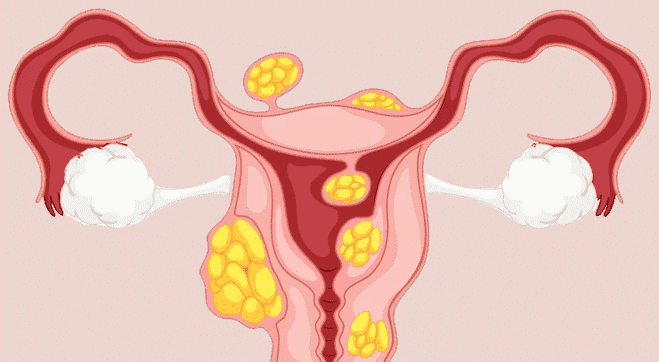What is Uterine Tuberculosis?
Uterine Tuberculosis A Rare Variant – Tuberculosis (TB) has become one of the widely spreading and uncontrollable infection in most of the developing countries. The bacteria responsible for TB generally reside in the lungs, causing Pulmonary Tuberculosis (PTB) but has also created its own way to affect other parts of the body including meninges, kidneys, bones, genital organs, lymphatic system, gastrointestinal system and bodily fluids thereby causing Extrapulmonary Tuberculosis (EPTB). Among the various forms of EPTB, Genital TB in females is becoming the common form of infection leading to infertility, menstrual irregularities, chronic Pelvic Inflammatory Disease (PID) and dyspareunia. Genital TB is chronic with low-grade symptoms, thus it becomes very difficult to diagnose and treat.
What causes uterine tuberculosis?
TB is caused by the bacteria belonging to the species called Mycobacterium tuberculosis (MTB) complex which has become a rising challenge across the globe. TB can affect any part of the body along with lungs without any clinical manifestation and also has a fair possibility of recurrence. The bacteria spreads through aerosols in case of PTB whereas through blood and lymphatic system in case of EPTB. PTB is symptomatic and can be diagnosed easily; EPTBIS mostly asymptomatic and needs diagnosis via clinical history and multiple tests. TB is found mainly in developing countries due to lack of knowledge, inadequate availability of medicines, poverty and population. Thus, morbidity and mortality of the disease has been increasing in developing countries.
How is uterine TB originated?
The origin of TB dates back to 2400 B.C, to Egyptian mummies, wherein skeletal deformities pertaining to MTB infections were observed in them. But it was not until the mid 19 century, when the term ‘tuberculosis’ was coined by Schonlein, and this term replaced the words like ‘consumption’ and ‘phthisis’, which were in use in the 17 and 18″ centuries. Even though the causative agent, the tubercle bacilli was isolated later, in 1882 by Dr. Robert Koch. This started the fight against this contagious pathogen in the true sense, and with the advancing time, tests and antibiotics came to the picture to combat TB.
Our country India holds about 27% of world’s TB burden and ranks second for the infection. As per Global tuberculosis report 2019, totally 21.55 lakh TB cases has been notified in India of which 34% cases are from females. According to annual report of Revised National Tuberculosis Control Programme (RNTCP) 2019, three million women are affected with TB and the genital TB is the cause of top five cases of death in Indian women. Genital TB in developing countries arise due to gender-based social, cultural and economic inequities between males and females. In few states and cities in India, women are still restricted from getting education, employment and health care services. Genital TB in females occurs due to delay in identifying the symptoms and ignorance which further makes the disease difficult to diagnose and non-compliance to treatment thus increasing the stigma of the infection.
What is the symptoms of uterus TB?
Generally the size and shape of the uterus appear normal in females with uterine TB. The infection localizes in the endometrial tissue of the uterus from the fundus and decreases towards the cervix. The infection gets shredded during the menstruation cycle but again recurs from the tubes. Extensive and untreated infection in the uterine can lead to ulcerative granular or
How is uterine TB diagnosed?
There is no definite diagnosis available for Genital or Uterine TB. Uterine TB needs to be ruled out through systematic clinical examination and intensive investigations Clinical examinations include chronic untreated PIDs irregular menstrual cycles, persistent vaginal discharges,omatous caseous lesions and menstrual cycles, persistent vaginal discharges,tubercle bacilli. post menopausal bleeding and unexplained Bacteriological Evaluation Infertility. Investigations include past or present These method aims at isolation of the bacterial history of TB in the patients and their close family cells in culture or identification of its DNA in the members, locality, lifestyle and presence of other specimens directly. Microscopic examination of infections such as HIV. Diagnostic Test like X- the specimens after staining with Ziehl Neelsen Ray, blood tests like complete blood count test (CBC) method to observe MTB in the direct specimen or and Erythrocyte Sedimentation Rate (ESR) and post isolation in culture can be done. The Polymerase Chain Reaction (PCR) techniques can susceptibility of the bacilli to various anti-TB aid as a tool for detection. The World Health drugs can also be tested for easy initiation of Organization (WHO) recommends that a positive appropriate drug regime. In cases where the culture or a positive histology or a sound clinical bacteria cannot be grown in culture, molecular presentation should be considered to make a methods like Line Probe Assay, PCR and diagnosis of EPTB. Below are a few routinely GeneXpert to check for the presence of the employed methods and drug susceptibility before initiating treatment with higher drugs. Surgical treatment of the affected genital part may be required in untreated and drug resistant cases.
How can uterine TB prevented?
Preventing TB infection primarily involves minimized exposure to the bacterium. EPTB such as Uterine or other genital TB can be prevented by avoiding TB infection in other parts of the body especially lungs and abdomen. PTB in young age in females can lead to Genital or Uterine TB. Adopting safe sexual practices may also decrease the spread of infection.
In India, BCG vaccination is included in immunization protocol of children which prevents 80% of all severe forms of TB. Also in rural areas of India, RNTCP in collaboration with Maternal and Child Health care programme works to educate and create awareness among the females for the disease with signs, symptoms and treatment, thus preventing the spread of the infection.
Awareness regarding uterine TB
– TB remains difficult to tackle due to its ability to affect various parts of the body and developing drug resistance
– Genital TB needs to be identified rapidly depending on the clinical history, prevalence and diagnostic tests
– In vitro fertilization can be adopted in females treated for Genital TB as required
– Awareness of the disease should be made in epidemic regions with Genital TB and also in females
through various education programmes
Is TB in uterus contagious?
Uterine TB is contagious and tricky to diagnose and therefore, demands a combined approach of clinical examination, investigations and considerable amount of suspicion. It should necessarily be ruled out in patients with PID, who are not responding to the prescribed standard antibiotics, in woman with irregular menstrual cycles, persisting vaginal discharge, Infertility and in cases of post menopause bleeding. Women exposed to the risk factors like, exposure to open pulmonary TB, a prior history of TB, staying in high prevalence areas, low socio-economic conditions, closed communities or having other diseases that compromise the immunity should be checked for the probabilities of Uterine TB. All in all, a vigilant eye of the clinicians to detect the disease and awareness among the common people to report the symptoms, which are mild and difficult topick up will reduce the incidences greatly. With the reduced number of cases, the transmission will simultaneously decrease, enabling to gain some control on uterine TB; a prevalent yet not enough reported form of TB.








